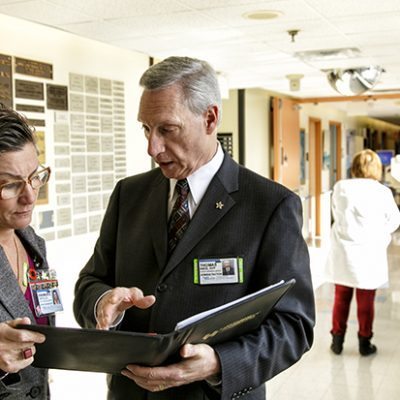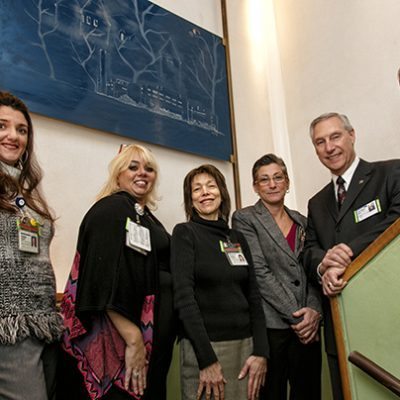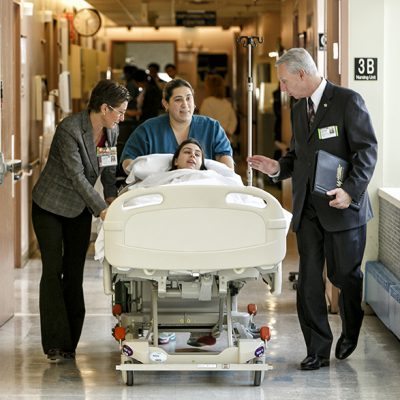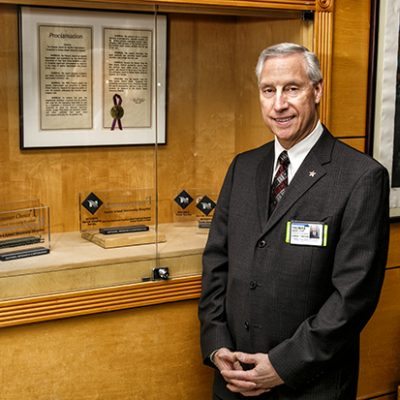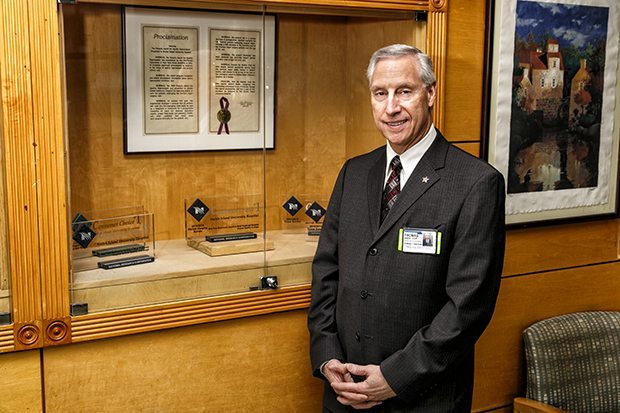
SIUH’s Department of Patient Representation strives to make hospital stays seamless for both patients and their families
by Jessica Jones-Gorman • Photos By Amessé Photography
In his role as Senior Director of Patient Experience and Patient Relations for Staten Island University Hospital, Thomas Niesi Jr. is concerned about more than just clinical care. “Of course caring for the patient with medicine and treatments is a major part of what we do,” Niesi explained. “But caring about the patient is really what’s at the heart of this organization.
When a patient enters through these doors, it’s not only our responsibility to treat them medically—we must also work together to treat them emotionally, too. So we address every concern, listen to every difficulty, and work with family members to solve any healthcare woes.”
Together with his staff, Niesi works as a liaison between SIUH and Press Ganey, the national healthcare performance improvement experts who provide patient surveys to more than 10,000 healthcare organizations nationwide. He reviews patient comments, shares patient satisfaction data with management staff, and continually works on initiatives to improve the patient experience.
Part of his department’s responsibility includes recognizing staff for Service Excellence.
“If a patient or family member writes a complimentary letter about a particular staff member\physician, we recognize them with a star pin and certificate at a reception,” said Niesi. “The hospital’s executive director, Donna Proske, presents the certificate and the event is also attended by board members.” Niesi also speaks to every new hire at orientation about the importance of providing a positive patient experience.
“I like to bring to their attention the fact that the people they are caring for are their family, friends, and neighbors,” he said.
“Eighty-five percent of our employees live here on Staten Island, and there are only three hospitals in this borough. When residents need care, odds are they are entering through our doors. So as an employee of SIUH, you are treating your own friends and family…you are caring for the residents of your own community.
Everything we do—both inside and outside of this hospital— speaks to our reputation. What I’ve found in all of my years working here is that this is not just my place of employment, this is my hospital, and that raises the bar for quality care and service significantly. Unfortunately, we’re all potential customers, which can result in us caring for patients one minute and being cared for by our co-workers next.”
Niesi started working at SIUH in February of 2002, joining the hospital as an associate director in the Information Services department, where he and his staff developed numerous applications for various departments. After serving in that capacity for a little more than three years, he took an interest in the position Jim Powell, his friend and predecessor, performed.
“Occasionally I would take my lunch hour and follow him around to see what he did here in the hospital,” Niesi recalled. “I was very interested in his work, and when a management position in Patient Representation became open, I felt it was a great opportunity to do something different with my life. I spent so many years doing computer work; I wanted to do something with more of a human element.”
So, in August 2005, Niesi became director of the hospital’s Patient Representation Department.
“Together with my staff, we advocated for those the hospital cared for, addressed their concerns, and investigated any formal complaints,” Niesi explained.
A few years later, the professional was promoted to associate vice president of Patient Experience, where he pursued a more focused role. He formed committees, analyzed survey data and patient comments, and presented his findings to management and staff. A rapidly evolving national healthcare system created an even stronger focus on patient relations for the rapidly developing department.
“Since I first got involved with this department, the patient experience has really taken on a life of its own in healthcare,” Niesi said. “The government has also raised the bar—the Centers for Medicare and Medicaid now conduct their own patient satisfaction surveys and make that information viewable on their website. Consumers can compare our hospital against any other in the country that is monitored by CMS, and that’s made quality of care just as much about patient satisfaction as it is about clinical treatment.”
For Niesi, the shifting healthcare system creates an even stronger focus on excellent service.
“The challenging part of this business is speaking with people who are many times at their worst: thrown into unexpected illness and perhaps financial situations; we hear their grievances and help them deal with their frustrations and challenges,” he said. “And we do our best to make sure those frustrations do not clash with the care and service this hospital provides. Today’s healthcare comes with higher premiums and deductibles, so patients expect a higher level of service and care, and that’s exactly what we strive to provide.”
Niesi and his staff also spearhead initiatives to improve the patient experience. Collaborative Care Councils involve all hospital staffers striving to create positive change and improvements in their individual departments.
“The Patient Representation Collaborative Council came up with the idea of using a pink colored, clearly labeled denture cup for our patients, because so many people were rolling these costly items up in tissue which would inadvertently get thrown away,” Niesi said. “It was a small change, but as a result we saw a significant decrease in lost property and an increase in financial savings.” His staff also worked to create a “Caring Closet,” consisting purely of donations from employees or community members. Collected items (coats, socks, shoes, etc.) are used to clothe needy patients who might have few or no belongings when they are discharged from a hospital stay. “We were able to clothe over 100 people over the past year and a half,” Niesi said. “Some are homeless and in need of a warm coat. I think the Caring Closet is a great example of the spirit that exists not only in my department but in this hospital.” Niesi also works closely with family members, discussing health care proxies and fielding questions about life-sustaining treatments and hospice care.
“For me, this career has definitely filled a very important part of my life,” he concluded. “To know that we’re helping people during very difficult times in their lives is very emotionally rewarding.”
SIUH Department of Patient Representation
475 Seaview Ave. / 718.226.8851 / siuh.org



